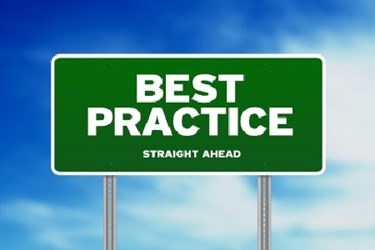Technological Consideration When Transitioning From VAR To MSP: Business Edition
By Matt Kanaskie, Marco

I previously wrote about the importance of considering the variety of technological shifts that need to occur for a VAR to successfully transition to MSP from a sales perspective.
But these considerations don’t end there: You also have to anticipate the need to essentially overhaul your technology infrastructure to accommodate not just these new tools, but also to provide on-going technical support for your customers. That will be the focus of this article.
Technology For The Business
Okay, so now you know what to do with your sales team, what about the rest of your business? The investment in technology only begins with sales. For every sale made, you’ll need the back-end support team to ensure that the order is entered, implemented and billed correctly; you’ll also need to be on-hand to support your customers when anything goes wrong with the technology you’ve sold them. Can of worms = open.
The best course of action before starting a new (or revamping an existing) Support Desk is to come up with a plan for success. Start by defining the quality of service you will provide and define what “great” service means to you — seriously, write this down. This should be in line with your company’s values (and if you haven’t defined those yet, you may want to press pause and go back and do that now).
You’ll want to ensure that you have the technology and solutions in place for the support team to function. Will you be using a unified communication or call center solution; are you going to leverage your CRM, or do you need to scope a specific help desk software? Are these solutions scalable and secure? What kind of hardware do you need to purchase for the support team—from telephones to desktops and headsets to mouse pads, you’ll need to make sure that your team has the tools they need to do their job.
Set the expectations right away; you can always modify your protocol later, as your team grows and evolves, but make sure that you have standards in place from the get-go — and have them in writing — to avoid any kind of confusion. Some things to consider:
- How quickly will you respond to customers?
- What channel will you utilize for support?
- Phone, email, live chat, SMS etc.
- How will your team behave when dealing with customers (tone, language, attitude)?
- How will you handle disagreements?
- What (if anything) are you not able to support?
- Who in the company is responsible for customer service?
- What is the escalation path within the team?
- What ethical principles will you hold to?
- What kind of metrics will you be tracking?
- Conversations: how many requests are you getting; when do they come in?
- Productivity: how are you managing incoming support volume?
- Team: how are individuals performing?
- Happiness: are customers satisfied? What can we improve?
- What is your Standard Work?
- Document this and make sure to keep it up-to-date as things change. This is invaluable for new hires or any types of questions that might arise down the line.
- How will you staff this?
- How many people do you need to hire right now?
- How do you scale for growth?
As with sales, your support team needs to be armed to the teeth with technological knowledge. You’ll want to train them, train them again, and keep training them on every aspect of every solution you sell or technology you support. Create a knowledge base and keep it up to date! Encourage lunch and learns or outings with vendors or master agents such as TBI; these relationships are priceless for both your employees and your business.
Lastly, the overall technical requirements you’ll need to function as an MSP vary from what you’re used to as a VAR. You’ll want to ensure your networks and databases are beyond reproach when it comes to security. Practice what you’ll be preaching and make sure you have a layered security protocol in place to keep your customers’ data safe.
The transition from VAR to MSP may not be simple, but in the long-term, it can be profitable. Keep in mind that the first year is going to be an uphill battle. Looking at the first year — or two — as purely transitional may help you maintain perspective. Remember, small wins are good! If you’ve signed up even a few people, then you’ve been successful. Take these wins and continue to build on them. Ask customers to do case studies with you; ask them for referrals; ensure that these customers have an amazing experience with your company, and you’ll not only practically guarantee a loyal, long-term customer, but you’ll also probably secure endless referrals and overall success!
About The Author
Matt Kanaskie is the Director of IT Sales at Marco, a technology services company founded in 1973. Matt has been consulting, designing and implementing complex IT and telecommunication solutions for business clients for over a decade. Matt’s experience has traversed individual sales contribution, sales engineering, subject matter expert, product management and sales leadership within IT and telecommunications industry. He joined Marco in 2015 to assist in development and execution of multiple cloud communications service offerings. Matt is currently the Sales Leader for Marco’s recurring solutions which include Managed Services, Cloud Services and Carrier Services.
